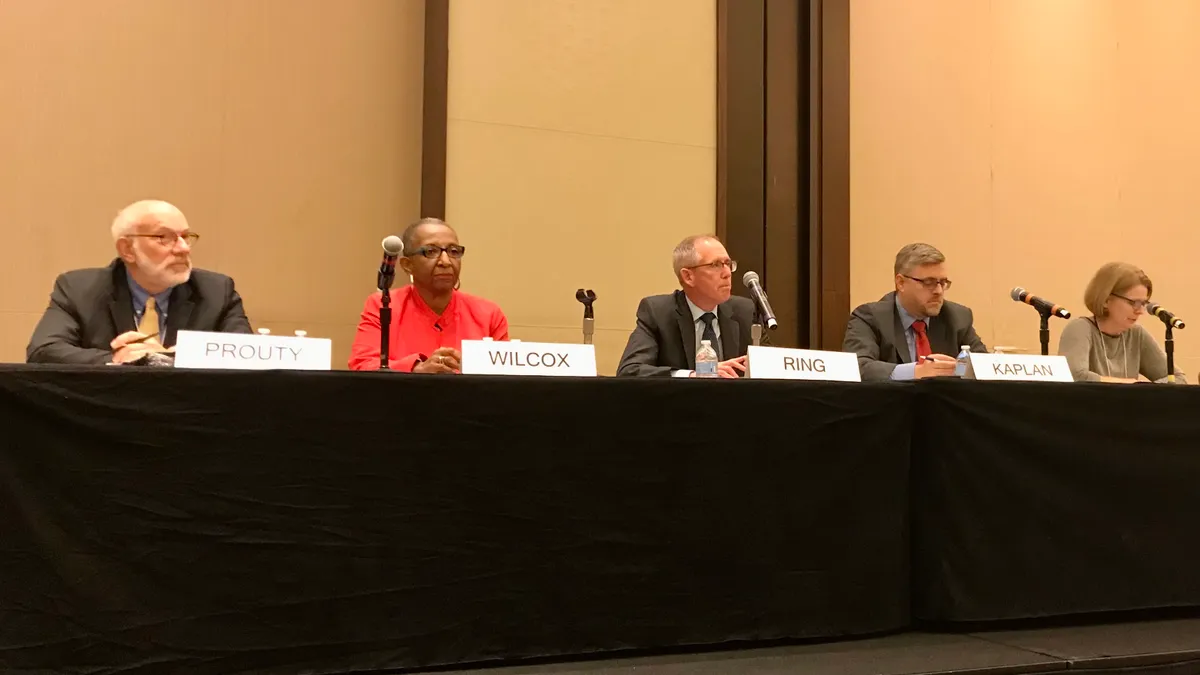A Michigan hospital violated the National Labor Relations Act when it offered a severance agreement to permanently furloughed employees that prohibited them from making statements that could disparage or harm the image of the hospital and from disclosing the agreement’s terms, the National Labor Relations Board held in a 3-1 decision Tuesday.
In March 2020, as the COVID-19 pandemic disrupted operations, McLaren Macomb Hospital issued temporary furloughs to 11 union-member employees before permanently furloughing them in June of the same year, the Board said.
McLaren Macomb offered the employees severance agreements that included a nondisclosure clause which required employees to agree not to “disclose information, knowledge or materials of a confidential, privileged, or proprietary nature” and not to “make statements to Employer’s employees or to the general public which could disparage or harm the image of Employer, its parent and affiliated entities and their officers, directors, employees, agents and representatives.”
But these restrictions violated Section 8 of the NLRA because they unlawfully restrained and coerced the employees’ exercise of their Section 7 rights, the majority of the Board held.
In doing so, NLRB overturned the contrary findings of an administrative law judge, who held that the severance agreement did not violate Section 8 based on a test articulated in the 2020 cases Baylor University Medical Center and International Game Technology.
In Baylor and IGT, the Board — staffed by a Republican majority — applied a test under which the “mere proffer” of severance agreements that require employees to agree to “no participation in claims,” confidentiality or nondisparagement provisions did not violate the NLRA.
The administrative law judge in McLaren Macomb applied this test to conclude the hospital’s agreements did not violate the NLRA, but the now-Democratic majority NLRB reversed, holding that the Board’s precedent set in Baylor and IGT is “flawed in multiple respects” and ignored prior decisions by the agency.
“The Baylor test arbitrarily adopts a two-factor analysis for finding that a severance agreement violates Section 8(a)(1) of the Act,” NLRB said Tuesday. “Whether or not employees view employer documents through the prism of Section 7 rights (a proposition questioned by the IGT majority), the Board must do so when the General Counsel issues a complaint alleging that a severance agreement violates employee Section 7 rights. Because both Baylor and the IGT majority fail this test, we overrule them.”
Separately, the Board upheld the administrative law judge’s determination that McLaren Macomb violated Section 8 of the Act by permanently furloughing the 11 employees without first notifying the union representing them and by communicating and directly dealing with the employees to enter into the severance agreement while bypassing and excluding the union.
In a dissent, Marvin Kaplan, the Board’s lone Republican, similarly agreed with these two findings but split with the majority over its reversal of Baylor and IGT.
“Baylor and IGT were sound, pragmatic decisions fully consistent with the Act, and my colleagues have failed to establish sufficient grounds for overturning those decisions,” Kaplan said. “Contrary to my colleagues’ assertions, the holdings in Baylor and IGT did not conflict with ‘longstanding precedent.’”
In an article, management-side attorneys at Fisher Phillips wrote that there may not be a one-size-fits-all approach to complying with the NLRB’s decision in McLaren Macomb. One takeaway, according to the attorneys, is that employers may be found under the NLRB’s standard to have committed an unfair labor practice by offering severance agreements with overly restrictive language even if the employer does not seek to enforce such agreements.
“For some risk-averse employers, it might make sense to immediately cease from including confidentiality and nondisparagement clauses in your severance agreements,” the attorneys said. “For others, a healthy disclaimer clause or other written safeguards will be the best approach. Still others may decide to take a business-as-usual approach.”
Correction: In a previous version of this article, Marvin Kaplan's name was misspelled.














